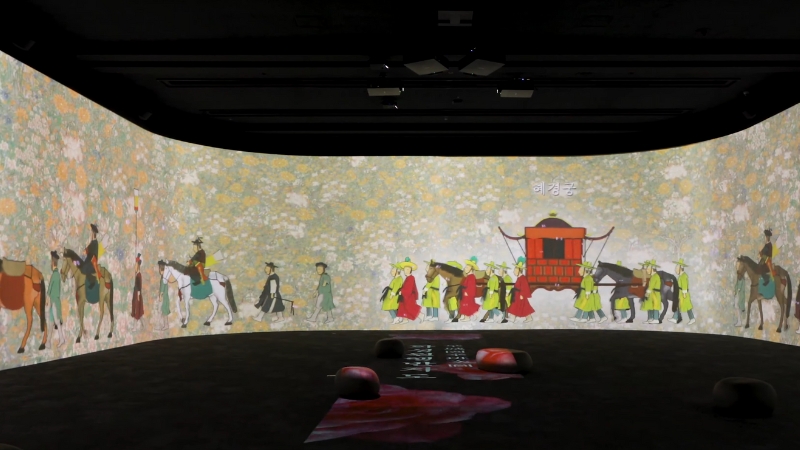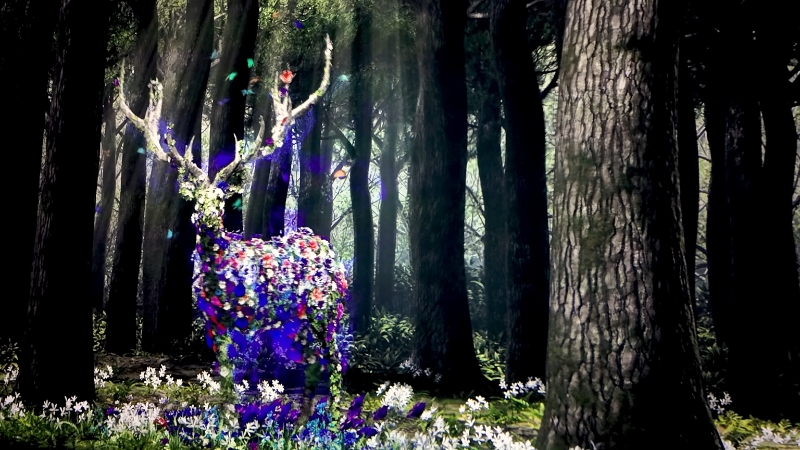Walk into a museum in 2025, and chances are you’ll see more than static glass cases and placards. Museums around the world are stepping boldly into the future with augmented reality (AR), turning passive viewing into interactive exploration.
AR is no longer just a tech buzzword; it’s a tool that’s completely reshaping how people engage with culture, history, science, and art.
By layering digital content, like 3D models, animations, and historical reconstruction, onto real-world exhibits, AR lets visitors go beyond simply looking. You can peek inside ancient structures, watch extinct animals roam, or even chat with a holographic philosopher.
Here’s a closer look at the top museums in 2025 using AR to make exhibits feel alive, accessible, and genuinely exciting.
1. National Museum of Korea

The National Museum of Korea doesn’t just display artifacts; it animates them. As one of Asia’s most respected institutions, the museum has fully embraced digital tools, including AR, to bridge the gap between the past and present.
AR Highlight
In its Immersive Digital Gallery 2, visitors can explore a Ten-story Stone Pagoda from the Goryeo Dynasty in ways no traditional exhibit could allow. With AR overlays accessed via smartphone or museum-provided devices, guests can interact with each level of the structure.
Animations and historical facts pop up as you move, giving context to carvings, construction techniques, and cultural significance.
The exhibit goes beyond mere visuals. There’s an element of narrative storytelling woven into the digital layers, letting people follow specific events and figures related to the pagoda’s history.
Why It Works
Since the digital galleries launched, over a million people have visited, with many singling out the AR pagoda experience as a highlight.
One review called it “mind-blowing,” adding that it made them “feel like they were actually inside the pagoda, learning through experience.”
2. Lost Atlantis Experience
The story of Atlantis has captivated imaginations for centuries. On the volcanic island of Santorini – often linked to the legend – the Lost Atlantis Experience brings the tale to life using AR and other immersive tech.
AR Highlight
The centerpiece is a sprawling diorama of what Atlantis may have looked like. Point your AR-equipped device at different sections, and the city springs to life.
You’ll see animated scenes of markets, people, temples, and even daily life reconstructed from Minoan civilization influences. One of the most memorable features is a holographic Plato who “talks” about the philosophy behind the myth.
It’s an imaginative yet grounded way to blend historical scholarship with speculative storytelling.
Tech Features
Visitor Impact
Since its launch, the museum has drawn more than 500,000 guests. The AR diorama is often called “transportive,” especially for younger visitors and mythology fans.
It turns what could be a dusty debate about ancient texts into an immersive, visual narrative.
3. ARTE MUSEUM Jeju
View this post on Instagram
ARTE MUSEUM Jeju is where digital art and nature meet in jaw-dropping harmony. Created by the tech design firm d’strict, this space is more like an interactive fantasy than a conventional museum.
And while not all exhibits are explicitly labeled AR, many blend interactive media with physical spaces in ways that mimic or incorporate AR features.
Standout AR-Inspired Exhibits
- Waterfall Infinite: A floor-to-ceiling digital waterfall that shifts based on visitor movement. As you walk by, the flow responds, surrounding you in cascading water that seems real enough to touch.
- Jungle Glow: Visitors wander through a digitally rendered forest, complete with glowing foliage, moving creatures, and changing soundscapes.
Even if it’s technically more projection mapping than AR, the interactivity and depth make it feel like you’re stepping into a parallel reality.
Tech Details
With over 1.2 million visitors, the museum proves that blending tech and art isn’t just a novelty; it’s a powerful emotional experience.
Reviews often describe the feeling of being “part of the exhibit,” with many returning to see seasonal updates or themed expansions.
4. ARTE MUSEUM Las Vegas

Opened in 2024, ARTE MUSEUM Las Vegas took what worked in Jeju and scaled it up for a city that thrives on spectacle. Its location on the Strip makes it a rare cultural destination amid casinos and clubs.
Features Likely to Include AR
- Garden Light of Masterpieces: This exhibit reimagines classic paintings by layering movement, light, and sound. With AR, digital enhancements allow visitors to interact with the art directly, possibly seeing historical versions or alternate perspectives.
- ARTE CAFE: Even your coffee table becomes interactive here. Media art projects directly onto your space, with visuals changing based on hand gestures or phone input.
Visitor Perks
With 200,000 visitors and counting, ARTE MUSEUM Las Vegas is proving that tech-driven art has a strong foothold even in a city dominated by entertainment.
5. Théâtre des Lumières
@stellasgalaxies Such a relaxing and immersive way to enjoy these masterpieces! #theatredeslumieres #artexhibition #vangoghexhibition #seoul #seoultrip #southkorea #koreatravelguide ♬ ICARUS – Orchestral Version – Tony Ann
Set inside the historic Walkerhill Theater, Théâtre des Lumières is less about looking at art and more about walking through it. Paintings are projected across massive walls, floors, and even ceilings, surrounding visitors in moving canvases.
AR-Like Features in Recent Shows
- Lee Ungno: A Great Artistic Journey merges projection with interactive elements that may involve AR, especially in how they display layered information and animated brushwork.
- Classic Retrospectives: Exhibits like the Gustav Klimt and Yves Klein shows offer moments where AR could be used to “zoom in” on textures or unlock behind-the-scenes insights about the artwork.
Why It Works
Even with limited seating and timed entry, the museum has welcomed over 500,000 people. It’s especially popular for date nights, family outings, and travelers looking for more than sightseeing.
Bonus Picks
Here’s a look at other forward-thinking museums using AR, based on recent exhibits likely still active in 2025:
| Museum | Location | Notable AR Exhibit |
| Natural History Museum | London, UK | Visions of Nature: Uses HoloLens 2 to visualize wildlife and future ecosystems |
| de Young Museum | San Francisco, USA | Fashioning San Francisco: AR try-on for historical evening wear |
| Muséum national d’Histoire naturelle | Paris, France | REVIVRE: Animates extinct animals in 3D using mobile AR |
| The National Gallery | London, UK | Outdoor AR app brings famous works like Van Gogh’s to life in city settings |
| National Museum of Singapore | Singapore | Story of the Forest: Animates botanical illustrations into a digital jungle |
What’s Really Changing in 2025?
Here’s what really matters:
Visitor Experience
People don’t want to just read placards anymore. AR gives them a way to interact with stories, ask questions, and get answers right on their device or through motion-based interfaces.
Museum Demographics

Museums that adopt AR are seeing more young adults, families with children, and even digital nomads. It’s no longer just about being educational – it’s about being experiential.
Devices Are Evolving
The rise of mixed-reality headsets like Apple Vision Pro is making high-end AR more accessible. Museums may soon offer headset rentals or incorporate device compatibility into their design plans.
Final Thoughts
Augmented reality isn’t just a gimmick – it’s a powerful tool that’s reshaping cultural spaces in 2025. From Seoul to Santorini to San Francisco, museums are embracing technology to make exhibits feel more human, more alive, and more memorable.
The National Museum of Korea shows how AR can deepen our connection to historical artifacts. Lost Atlantis turns myth into interactive storytelling. ARTE MUSEUM and Théâtre des Lumières blur the line between gallery and digital dreamscape.
AR isn’t replacing traditional exhibits – it’s enriching them. And for millions of visitors around the world, it’s turning museum visits into something they’ll never forget.

